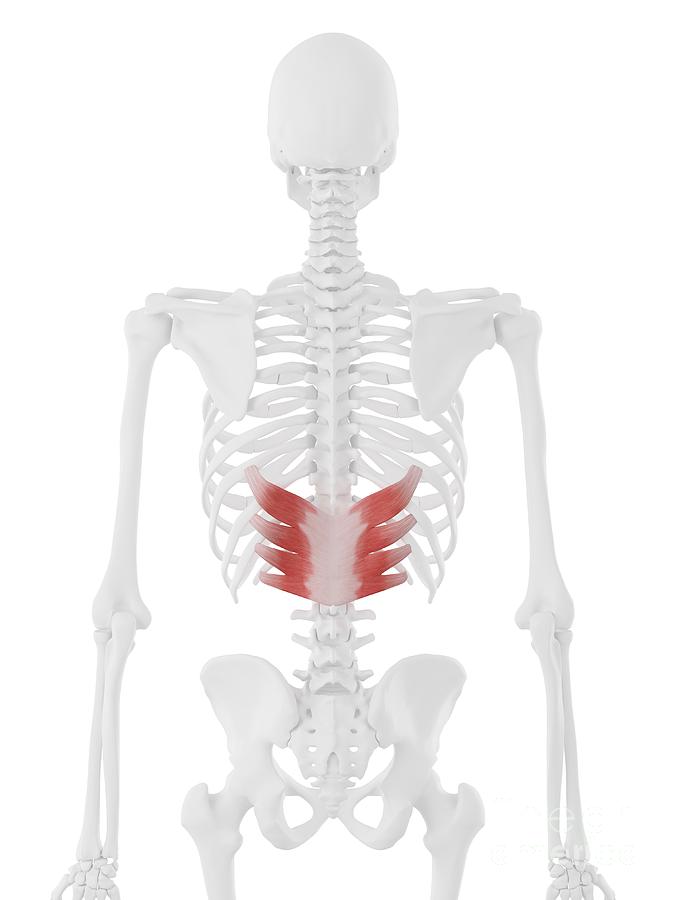
Serratus Posterior Inferior Muscle ubicaciondepersonas.cdmx.gob.mx
Serratus Posterior Inferior: The serratus posterior inferior is a broad muscle lying beneath the latissimus dorsi. Attachments: Originates from the spine and attaches to ribs 9 through 12. Actions: Depresses ribs 9 through 12. Intrinsic Posterior Muscles.

Serratus posterior inferior muscle, illustration Stock Photo Alamy
The serratus posterior inferior muscle is located in the mid to lower back and forms a V-shape. It originates from the spinal processes (the points of the vertebrae closest to the skin) of.

Serratus Posterior Inferior Origin, Insertion, Action The Wellness Digest
There are two serratus muscles, although the most commonly known one is the serratus anterior muscle. The lesser known is the serratus posterior muscle which is located in the upper and lower back's intermediate layer. This muscle can be further divided into the serratus posterior superior and serratus posterior inferior muscles.
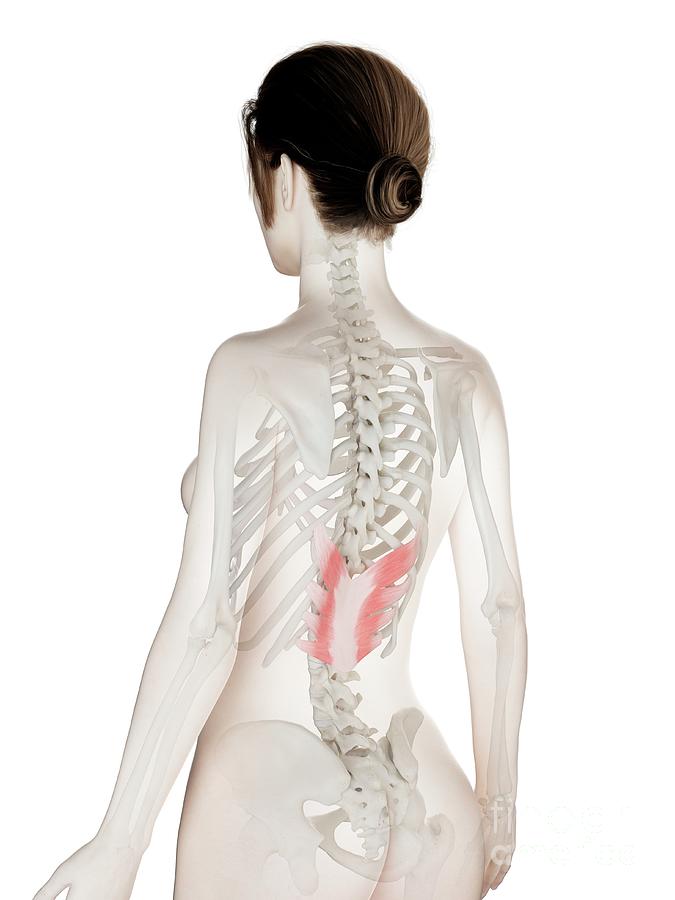
Serratus Posterior Inferior Muscle Photograph by Sebastian Kaulitzki/science Photo Library
The serratus posterior superior and inferior muscles are generally considered clinically insignificant muscles that, based on attachments, probably function in respiration. Interestingly, however, there is no evidence supporting a respiratory role for these muscles. In fact, some electromyographic data refute a respiratory function for these.

3d Illustration of the Serratus Posterior Inferior Muscles Anatomical Position on Xray Body
Serratus Posterior Superior Muscle Serratus Posterior Inferior Muscle Levator Scapulae Rhomboid Major Muscle Rhomboid Minor Muscle Origin The serratus posterior inferior muscle originates from the: - spinous processes of the eleventh and twelfth thoracic and first and second lumbar vertebrae; - adjacent supraspinous ligaments. Insertion

The Serratus Posterior Inferior Stock Illustration Illustration of rendering, serratus 56287441
The serratus posterior inferior (Latin: musculus serratus posterior inferior) is a broad irregular-shaped muscle of the back that lies deep to the latissimus dorsi muscle. It stretches between the vertebrae of the spine and ribs of the thorax.The serratus posterior inferior is located in the lower back at the junction of the thoracic and lumbar regions

Serratus Posterior Inferior Muscle Overview Human Anatomy Kenhub YouTube
The serratus posterior inferior muscle, also known as the posterior serratus muscle, [citation needed] is a muscle of the human body . Structure The muscle is situated at the junction of the thoracic and lumbar regions. [1]
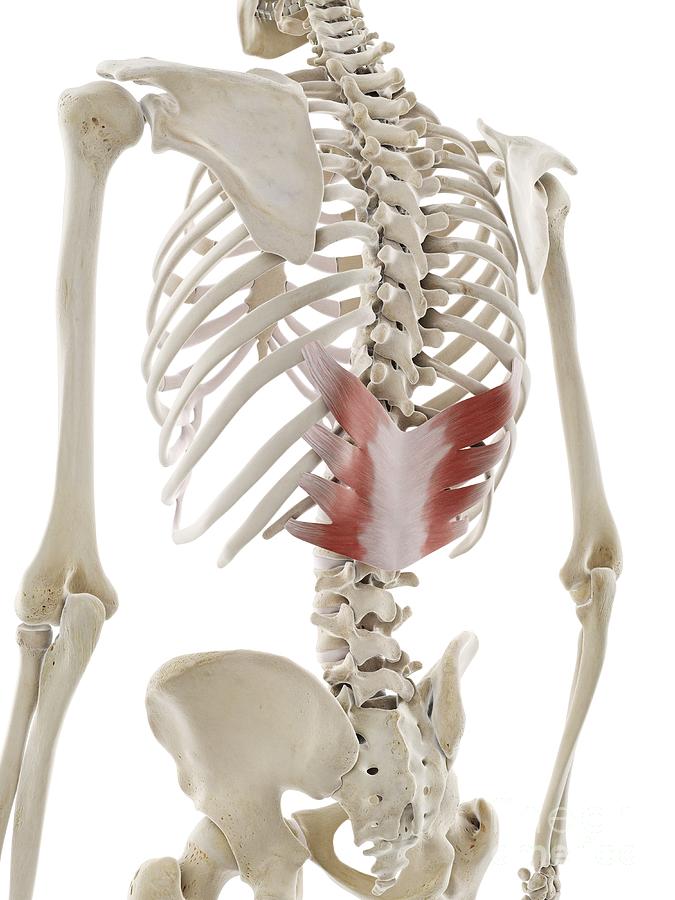
Serratus Posterior Inferior Muscle Photograph by Sebastian Kaulitzki/science Photo Library
Serratus posterior muscle is intermediate layer of back muscles consists of serratus posterior superior and serratus posterior inferior. Origin serratus posterior superior Serratus posterior superior: C7-T3 vertebrae spinous process and Nuchal ligament. Serratus posterior inferior: T11-L2 vertebrae spinous process serratus posterior inferior
:watermark(/images/watermark_only.png,0,0,0):watermark(/images/logo_url.png,-10,-10,0):format(jpeg)/images/anatomy_term/posterior-intercostal-arteries/uwymIyTDIV8qFcbs3Yn8zw_Arteriae_intercostales_posteriores_02.png)
Serratus posterior muscles Anatomy,function, innervation Kenhub
Serratus posterior muscles are thin intermediate muscles that lie deep in the superficial muscles. They are present in pairs and located above the intrinsic back musculature. There are two.
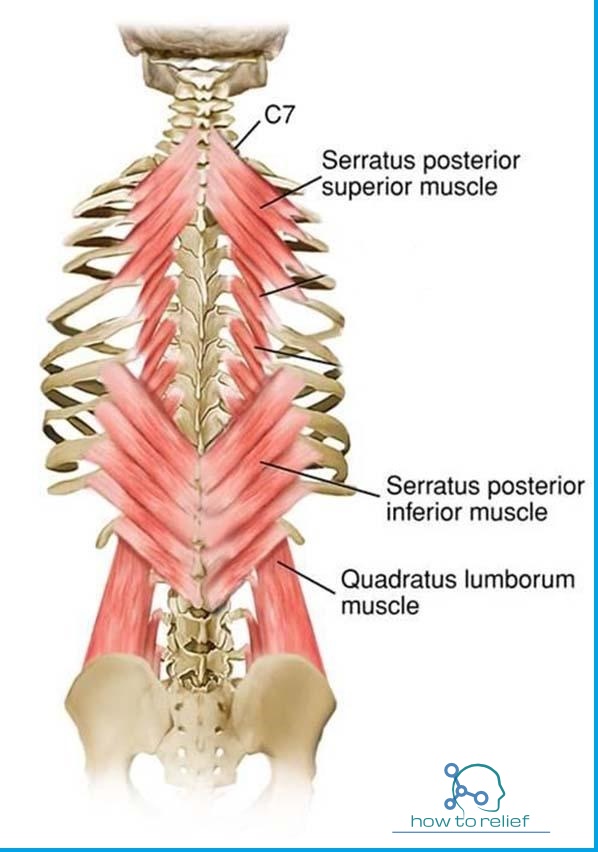
Serratus Posterior Muscles Origin, Insertion, Nerve Supply & Action » How To Relief
Definition. The Serratus posterior inferior ( Serratus posticus inferior) is situated at the junction of the thoracic and lumbar regions: it is of an irregularly quadrilateral form, broader than the preceding, and separated from it by a wide interval. It arises by a thin aponeurosis from the spinous processes of the lower two thoracic and upper.

Serratus Posterior Inferior The Trigger Point & Referred Pain Guide
The serratus posterior superior is a thin, rectangular shaped muscle. It lies deep to the rhomboid muscles on the upper back. Attachments: Originates from the lower part of the ligamentum nuchae, and the cervical and thoracic spines (usually C7 - T3). The fibres pass in an inferolateral direction, attaching to ribs 2-5. Actions: Elevates ribs.
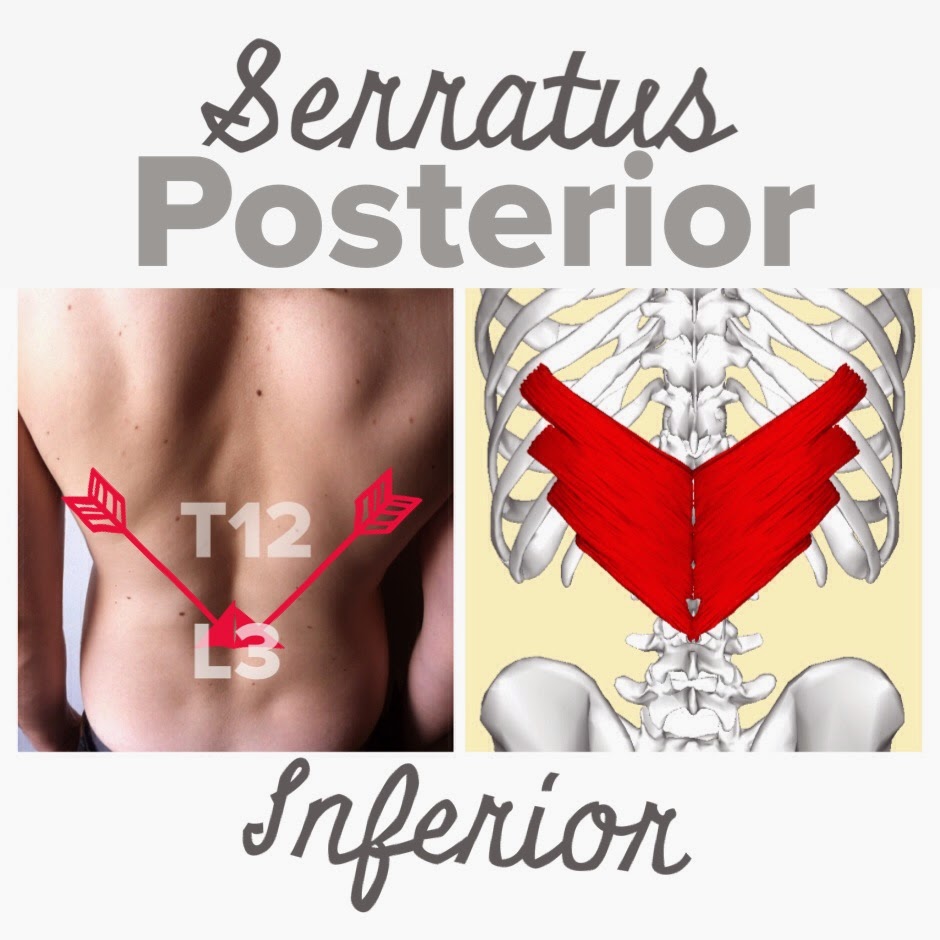
The Hip Joint Serratus Posterior Inferior
The serratus posterior superior and inferior muscles are generally considered clinically insignificant muscles that, based on attachments, probably function in respiration. Interestingly, however, there is no evidence supporting a respiratory role for these muscles. In fact, some electromyographic d.

Serratus posterior inferior muscle, illustration Stock Image F029/5197 Science Photo Library
The serratus posterior inferior is a muscle within the intermediate compartment of the back. It lies deep to the latissimus dorsi muscle in the lower back. Attachments: Originates from the thoracis and lumbar spines (usually T11 - L3) with the muscle fibres running in a superolateral direction, attaching to ribs 9 - 12.

Serratus Posterior Inferior Muscle anatomy, Human anatomy and physiology, Yoga anatomy
The serratus posterior inferior muscle forms from a thin, broad aponeurosis which is attached to the spinous processes of T11 to L2 vertebrae, and the intervening supraspinous ligament. It passes superolaterally and inserts onto the inferior border, just lateral to the angles of the 9 th to 12 th ribs 1-3. It is separated from the serratus.

Serratus posterior inferior muscle, illustration Stock Image F026/9433 Science Photo Library
The serratus posterior superior and inferior muscles are generally considered clinically insignificant muscles that, based on attachments, probably function in respiration. Interestingly, however, there is no evidence supporting a respiratory role for these muscles. In fact, some electromyographic data refute a respiratory function for these.
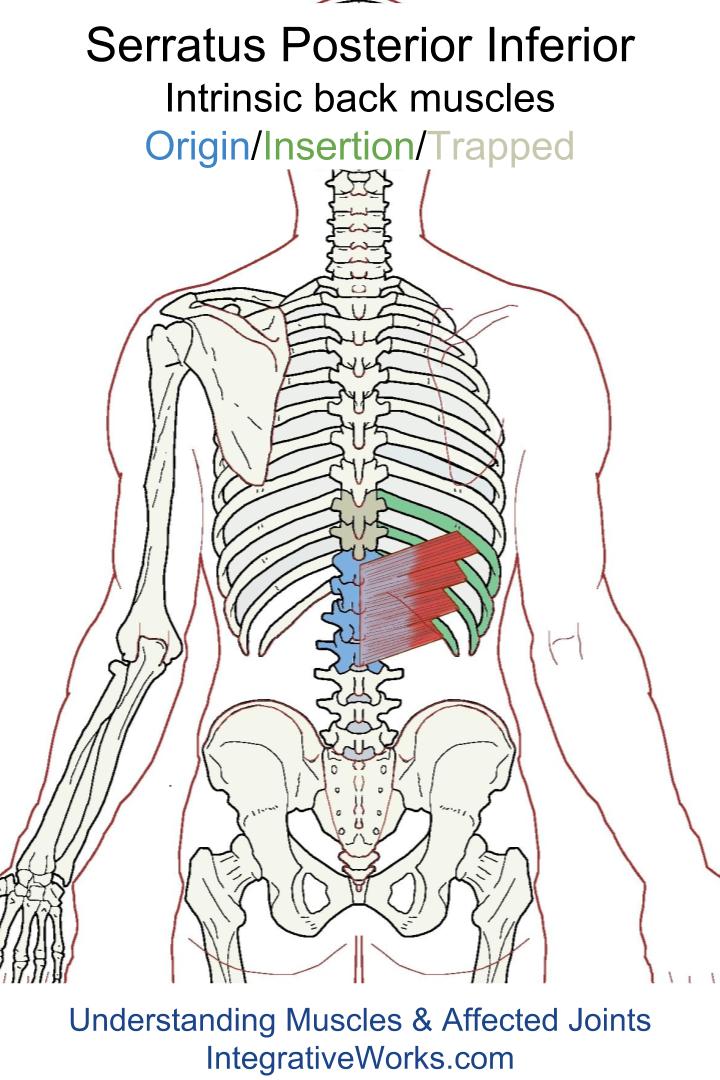
Serratus Posterior Inferior Functional Anatomy Integrative Works
The serratus posterior muscles are two paired muscles located in the upper and lower back. They include: The serratus posterior superior muscle The serratus posterior inferior muscle Together, these muscles comprise the intermediate layer of the extrinsic musculature of the back .